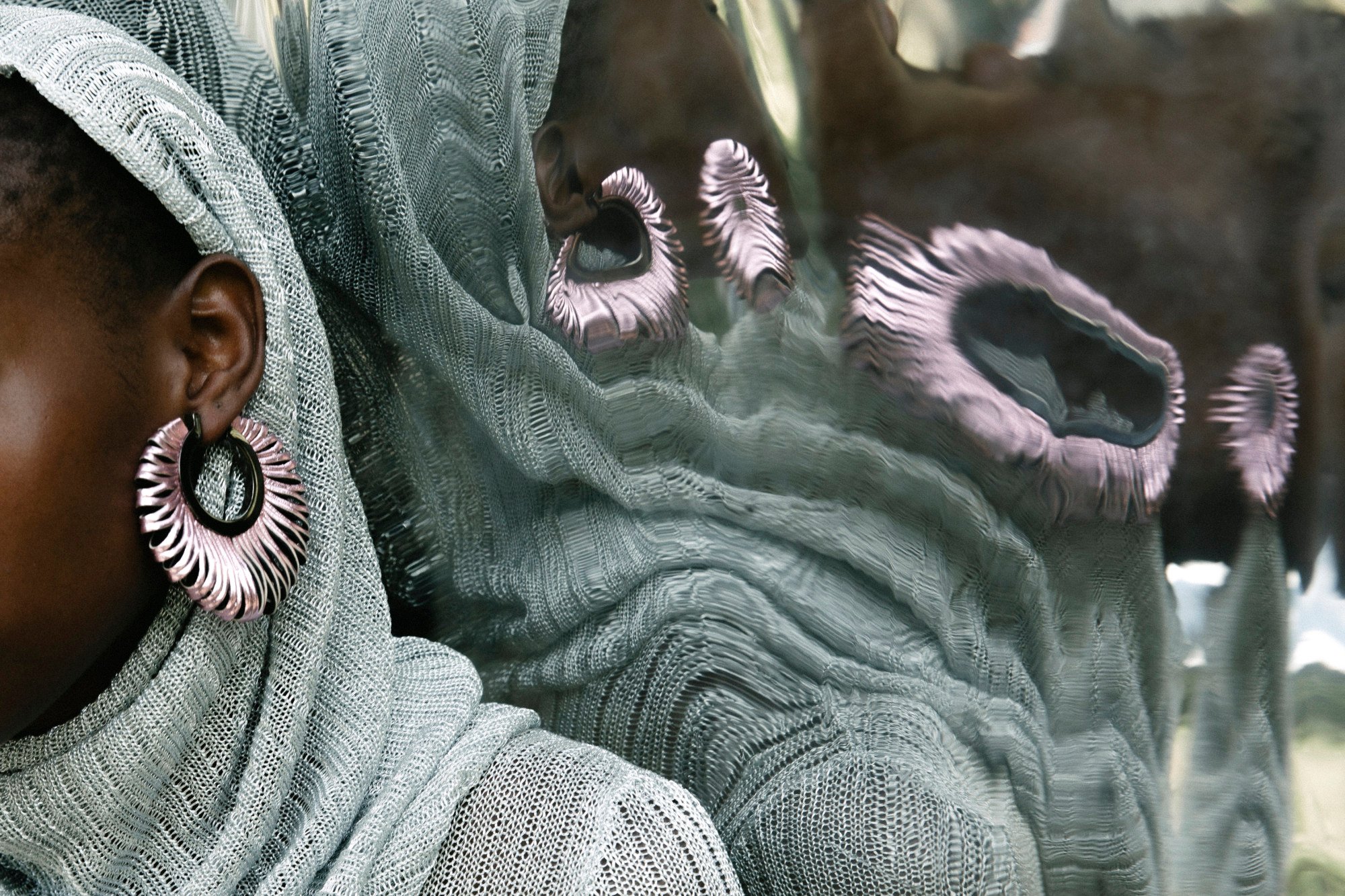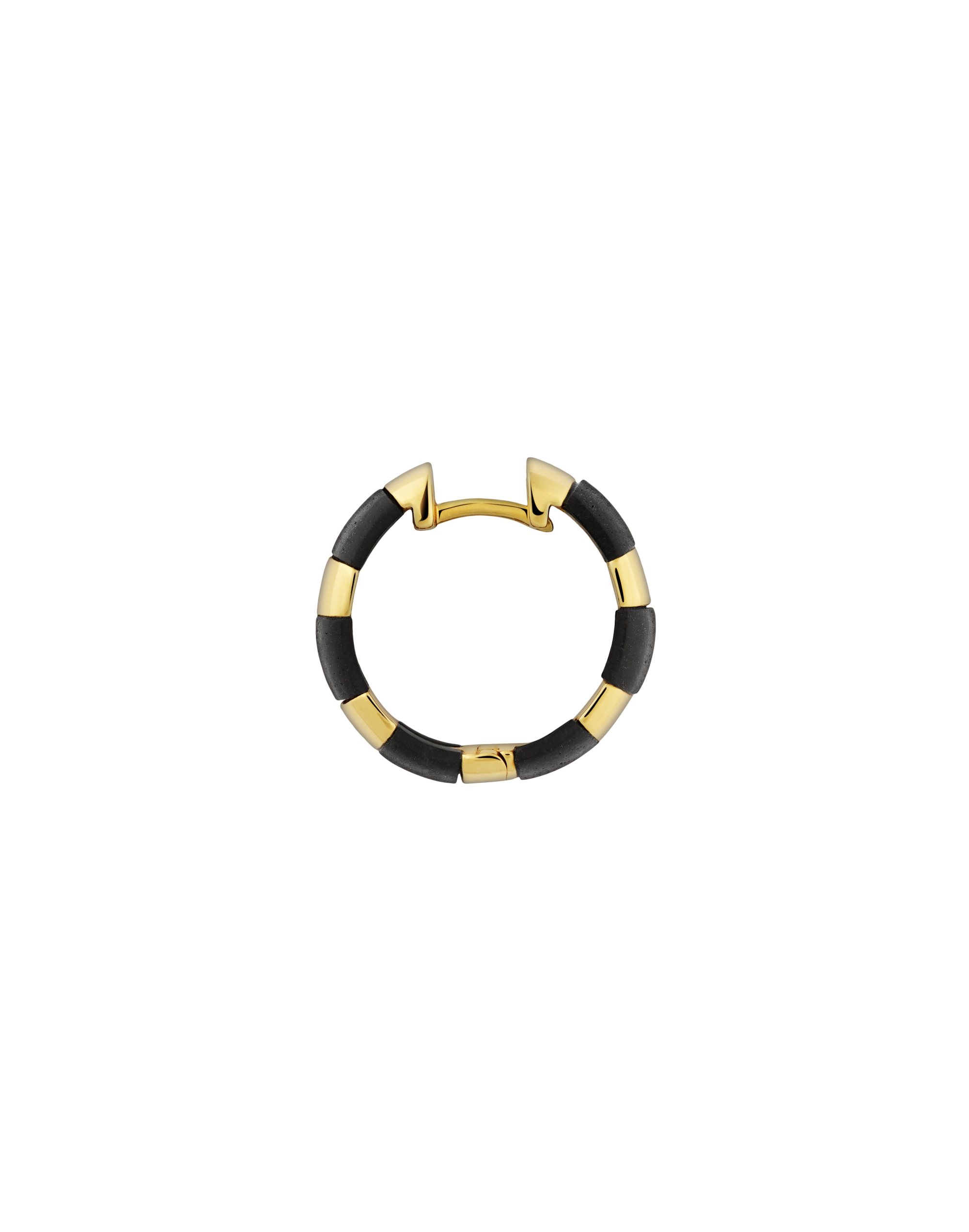Wood, leather and metal jewellery is having a moment: from Hermès to So-Le Studio, owned by the granddaughter of Ferragamo’s founder, designers’ imaginations are running wild with unusual materials

“I instantly liked the leather remnants and saw the possibility of transforming them into living organisms,” she says. “I also love that leather is soft, light and a living material that accompanies the wearer and ages in time, acquiring a beautiful patina.”

Sourcing inspiration from optical and kinetic art, architecture and fashion, Ferragamo founded her fine jewellery label, So-Le Studio, in 2017, working with leftover leather trims and brass shavings from factories in Italy to create edgy, elegant jewels. “I like to play with the illusion of making leather look precious with crystal and metallic finishes,” Ferragamo reveals. “While the pieces appear hard, heavy and made of metal, in fact, they are light and comfortable but still look luxurious.”
One such example is the Luminous necklace, a cascading matrix of upcycled leather tinged in metallic silver. Elsewhere, rings, cuffs, brooches and even hair ornaments play with colour and texture in contrasting leathers. “I like to respect the material during the process,” says Ferragamo. “A bit like being an alchemist, you see a remnant come to life again with a new story and identity.”
Wearable art? Brooches offer high jewellery designers the ultimate freedom
Ferragamo is one of a handful of designers who have adopted more unconventional materials in jewellery design, favouring glass, resin, horn and even wood over traditional metals and gemstones.

Another example is Danish architect and designer Sarah Müllertz who since 2014 has carved out a niche in sustainable jewellery with her line Kinraden, using mpingo or African blackwood. A very dense and expensive wood, mpingo has been used to craft clarinets and other classical wind instruments. With Kinraden, Müllertz works with the wood’s mechanical qualities through various time-honoured techniques, from sashimono – a traditional Japanese approach that creates interlocking joints without using nails, screws or adhesives – to traditional gemstone cutting, which has led to the creation of the brand’s signature blackwood diamonds.
5 new lifestyle finds that capture the wonder of nature
“It was through my initial material research that I came across mpingo, one of the hardest living materials on earth. I became fascinated by the composition of the wood and its deep black colour,” she says. “While traditional diamonds are formed from crystallised carbon, our mpingo diamonds are living, and harvested sustainably above ground.” Indeed, all of Kinraden’s wood comes from a WWF-protected, FSC-certified forest in Tanzania, “a sustainable ‘mine above ground’,” she says. And, while the velvety wood is so often the centrepiece of Kinraden’s creations, Müllertz also pairs it with a variety of precious metals for a charming contrast.

At Emily P. Wheeler, the eponymous label of the Los Angeles-based fine jewellery designer, rich, dark recycled ebony, has been used in hand-carved collector’s pieces, often one-of-a-kind or available in highly limited quantities. “I love the texture and deep brown tone of ebony and how it contrasts with gold,” says Wheeler, who adds edge to the material with diamonds and bright gemstones.
“I had always wanted to incorporate [ebony] in my collections, and was lucky to source it responsibly from a sculptor who had excess wood from an ebony log he purchased in the 1970s,” she continues. “Working with wood, a medium that often comes in larger pieces, also allows me to use one material in a large format. You can’t do that with most other materials in jewellery, aside from metals. Because of this, I’ve been able to use this versatility to my advantage, creating large cuffs, earrings, rings and most recently a collar with platinum and diamond fringe that disconnects and can be worn as earrings.”

It’s not just independent innovators rethinking the materials they use for contemporary rings, necklaces and bracelets. Fourth-generation family-run house Hemmerle, founded in Munich by brothers Joseph and Anton Hemmerle, has long been known for its one-of-a-kind creations characterised by innovative material combinations. Throughout its 130-year history, the German house has used a great number of unorthodox materials in its creations, spanning Egyptian faience – a self-glazing ceramic in a vibrant hue – to iron, moonstone, bocote wood – an exotic wood native to Mexico, Central America, and the West Indies – and carved cameos depicting 19th-century figures in delightfully decorative form.
Bring on the bling: 8 jewellery watches guaranteed to turn heads
Meanwhile, at Hermès, the French luxury giant has dabbled in the use of natural horn, sourced from Vietnam, as a jewellery medium. Such pieces as the Resille necklace – nine rows of polished, hand-cut links strung with gold – make use of the material’s mottling, subverting the otherwise clean, architectural lines.

- Bespoke houses like Hemmerle, Emily P. Wheeler and Danish architect Sarah Müllertz’s Kinraden are blazing their own trail with jewellery designs showcasing unlikely metals and novel materials
- Müllertz uses mpingo wood and traditional techniques from sashimono to gem-cutting, while even luxury giant Hermès has dabbled in the use of Vietnamese natural horn as a jewellery medium